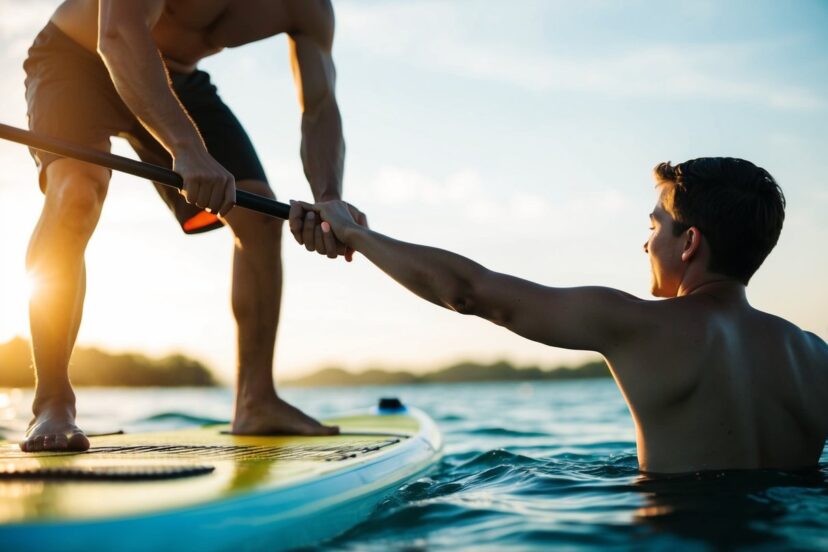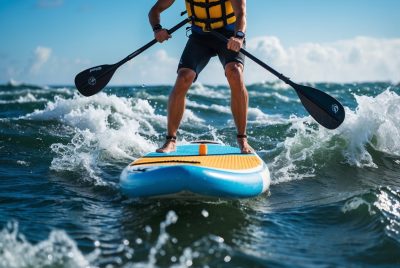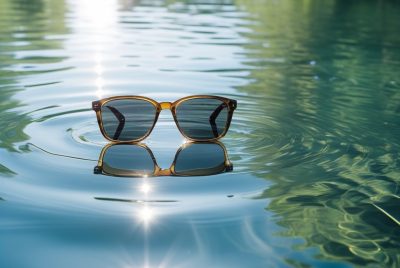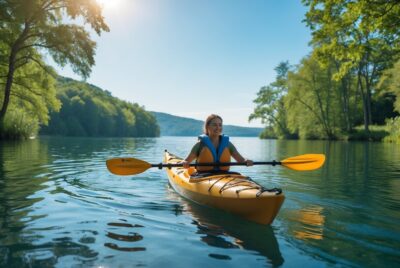Stand Up Paddleboard Rescue: Essential Tips
*We may earn a commission for purchases made using our links. Please see our disclosure to learn more.
Stand Up Paddleboard Rescue: Essential Tips for Safe Water Recovery
You will never know when you will need to perform a stand up paddleboard rescue! I’ve recently been fascinated by the lifesaving potential of stand-up paddleboards (SUPs). These boards are not just for leisurely paddles on calm waters. They can play a critical role in rescues. I’ve seen how versatile inflatable SUPs can be, navigating tight spots and shallow areas where larger vessels can’t go.

When facing an emergency on the water, using a SUP for rescue can be a quick and effective solution. The ability to paddle swiftly with your hands and reach someone in distress makes a big difference. It’s a skill that every paddleboarder should know, whether for personal preparedness or to help others.
Learning rescue techniques like the SUP flip rescue, which helps lift and stabilize someone in trouble, adds another layer of safety. It’s important to practice these techniques, ensuring readiness for any situation that might arise while on the water.
Understanding Stand Up Paddleboard (SUP) Rescues

SUP rescues are an essential skill for ensuring safety on the water. They involve using the paddleboard to assist someone who may be in distress. It is crucial to understand the different situations where a rescue may be necessary and how acting quickly can make a significant difference.
Types of SUP Rescue Situations
When I’m on the water, I know that various rescue situations can arise while using a paddleboard. These include tows, where I help guide a tired or injured paddler back to safety. Another important technique is the peer rescue, which involves assisting a conscious but struggling person.
There are also situations where someone is unconscious or unresponsive. In such cases, using a board flip rescue can help me bring the person onto the board with efficiency. Each of these scenarios requires different approaches and skills. Knowing the right technique can be vital in making sure everyone stays safe on the water.
Importance of Timely Response
I’ve learned that when it comes to rescues, acting fast is crucial. The sooner I respond, the higher the chance that I can prevent more serious risks. A quick response helps in calming the victim and minimizes the dangers they might face.
In SUP rescues, using the right equipment, like a coiled leash or proper clothing, makes it easier for me to reach someone swiftly. Being prepared means I can stabilize the situation effectively. Every second counts during these events, so responding without delay can be life-saving.
Stand Up Paddleboard Rescue: Essential Rescue Equipment

When it comes to stand up paddleboard rescues, having the right equipment can make all the difference. Key tools include personal flotation devices, rescue boards, and throw ropes. These items are crucial for ensuring safety during emergencies.
Personal Flotation Devices (PFDs)
A Personal Flotation Device (PFD) is a must-have for any paddleboard rescue. I always make sure mine is comfortable and fits well, as it needs to allow for easy movement while keeping me safe.
Choosing a PFD with bright colors helps me remain visible in the water. Many PFDs come with extra features like pockets for carrying small tools. It’s important to regularly check its buoyancy and make sure it’s ready for action. A good PFD can be the difference between safety and danger.
Rescue Boards and Sleds
Rescue boards and sleds are vital in swift water rescue situations. I prefer using a rescue board that’s both sturdy and lightweight. These boards are specially designed for ease of maneuverability, allowing me to quickly reach someone in distress.
Some boards come with attachment points for additional gear, which is useful for longer rescues. Sleds can be attached to motorized crafts, providing extra support during rough conditions. Selecting the right type depends on specific needs, but having these options increases my capabilities in an emergency.
Throw Ropes and Bags
Throw ropes and bags are essential tools in my rescue kit. A well-chosen throw rope can be deployed quickly in a rescue scenario. I look for ropes that have strong, durable materials and are of appropriate length for my paddling area.
Throw bags are designed to keep ropes tangle-free, which is crucial for fast deployment. I practice regularly to ensure accuracy and efficiency when using these tools. Keeping the rope clean and dry when not in use extends its lifespan, making sure I’m always prepared for emergencies.
Rescue Techniques and Procedures

To ensure safety during stand-up paddleboarding, it is crucial to master a variety of rescue techniques. Whether rescuing oneself or assisting another, these skills can make a significant difference in emergencies.
Self-Rescue Techniques
In the event that I fall off my paddleboard, getting back on efficiently is vital. First, I position myself beside the board and grasp the handle or edge. Using a quick kick, I propel myself up, sliding onto the board belly-first.
Once I’m on, I slowly move back to my feet, maintaining balance with my knees slightly bent. Practicing self-rescue regularly helps my confidence and ensures quick response times in challenging situations, making it a key skill for any paddleboarder.
Assisted Rescue Methods
Sometimes, another paddler may need help returning to their board. I often use the board flip rescue technique. Standing securely on my board, I reach out and grasp the other board’s tail. I then maneuver it so that my fellow paddler can easily climb back on.
If they’re struggling, I use my paddle to offer extra support. The key here is to stay calm, communicate clearly, and act swiftly, ensuring both I and the other paddler stay safe throughout the process.
Towing a Casualty
When towing another person, using a makeshift towline is effective. I attach a rope or leash to the nose of my board and securely fasten it to the rear of the casualty’s board. Keeping a steady pace, I paddle towards safety, always checking to ensure the person in distress is secure and not overly fatigued.
Effective communication is crucial as I may need them to shift weight or give me feedback on their comfort. Regular practice of towing techniques is essential as it prepares me for unexpected incidents where quick thinking is necessary.
Stand Up Paddleboard Rescue: Preventative Safety Measures

When it comes to paddleboarding, staying safe starts with proper preparation. Understanding the environment, equipment, and guidelines is key to enjoying this activity without unnecessary risks.
Environmental Assessment and Stand Up Paddleboard Rescue
Before heading out, I always check the local conditions. Knowing the five W’s—wind, water, waves, weather, and websites—is essential. I use reliable apps or websites to get the most recent and accurate weather forecasts. I watch directly for changes in wave patterns and water currents, which can be tricky and unpredictable. Additionally, understanding the water depth and any underwater hazards, like rocks or seaweed, helps me plan a safer route.
Having this environmental knowledge makes any paddleboarding adventure safer and more enjoyable, guiding me to make smarter choices. This way, I keep myself and others safe while on the water.
Safety Briefings and Signage
I consider it crucial to pay attention to any safety signage and briefings available at the location. Many areas post signs to warn about specific hazards like strong currents or marine life that I might not be aware of as a visitor. Such information helps me decide where and when it’s best to paddle. Sometimes, instructors or local experts provide briefings on additional safety measures.
These briefings often cover important signals and emergency procedures, so I take notes. By following these guidelines, I feel more confident and prepared to handle unexpected situations. This proactive approach empowers me to enjoy my paddleboarding experience while staying vigilant.
Regular Equipment Checks
Before each session, I perform regular equipment checks to ensure everything is in working order. I inspect my paddleboard for any cracks or damage that could affect its performance. Additionally, wearing a lifejacket is non-negotiable for me, and I make sure it fits properly. I also check my board leash for wear and ensure it’s attached securely to my ankle.
I test any other gear, like my cell phone’s waterproof case, to ensure it’s functional. These routine checks prevent accidents caused by faulty equipment and reinforce my safety on the water. By taking a little time in advance, I’m able to focus more on enjoying the paddleboarding experience.
Stand Up Paddleboard Rescue Training

In the world of stand up paddleboarding (SUP), rescue training is crucial for safety and skill enhancement. It involves earning certifications, practicing specific drills, and continually updating one’s skills.
Certification Programs
First, certification programs provide structured training for SUP rescue techniques. These programs typically offer a clear pathway from basic to advanced skills. I can gain expertise in both flat water and whitewater scenarios through guided instruction. Courses may include equipment requirements, such as a coiled leash, suitable immersion clothing, and paddleboards. Certification not only builds confidence but also qualifies me to assist others in emergencies. Accredited organizations usually offer these programs, ensuring that I meet industry standards.
Skill Development Drills
Skill development drills are a vital part of SUP rescue training. I typically engage in exercises that simulate real-life rescue scenarios. For instance, practicing the flip rescue technique helps me safely turn over my board to assist an unconscious or compromised victim. These drills improve my agility and decision-making in high-pressure situations. Regular practice ensures I am always ready, turning theory into second nature. It’s crucial to practice with peers or an instructor to receive feedback and make necessary adjustments.
Continual Learning and Practice
Continual learning is essential for staying sharp in SUP rescue skills. I make it a point to refresh my techniques, as conditions can vary on each outing. Joining workshops or online courses offers new perspectives and updates on best practices. Sharing experiences with other paddlers enhances my practical knowledge, and I learn from both their successes and mistakes. Practicing routinely enhances my confidence and ensures readiness for emergencies at any moment. Being proactive in learning fosters a safer environment for all paddleboard enthusiasts.
Frequently Asked Questions
I often get asked about the ins and outs of using a stand-up paddleboard for rescues. It involves understanding techniques, equipment, and the different conditions you might face on the water. Safety and preparation are key to a successful rescue.
1. How do you perform a rescue using a stand-up paddleboard?
To rescue someone with a paddleboard, I approach the person calmly and extend the board to them. It’s important to communicate clearly as they grab the board’s edge. I help them position themselves parallel to the board before assisting them on top.
2. What safety equipment is required for stand-up paddleboard rescues?
Essential safety gear for these rescues includes a personal flotation device (PFD), a leash for the board, and a whistle for communication. A first aid kit can also be crucial. I always make sure I have these items with me to ensure safety.
3. Can stand-up paddleboards be used for lifesaving in all types of water conditions?
I generally find stand-up paddleboards most effective in calm or moderately choppy water. In rough or fast-moving water, it becomes harder to control the board, making rescues risky. Evaluating the water conditions is essential before attempting a rescue.
4. What are the best techniques for recovering someone from the water onto a stand-up paddleboard?
I always suggest techniques like asking the person to kick gently while pulling themselves onto the board. Guiding them to use their legs to push while hoisting from the deck is important for a smoother recovery. Proper positioning makes the process easier.
5. How can a stand-up paddleboarder avoid needing rescue themselves?
I focus on preparation by checking weather conditions and using appropriate gear like a PFD and leash. Staying within my skill level and avoiding risky areas also helps. Keeping a close eye on fatigue levels is crucial so I can return safely.




